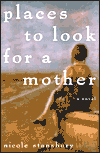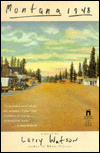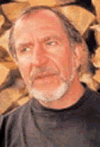

| Summer conjures up images of relaxation and leisure-time activities, one of which may be reading a good book. A number of U of U alumni have been working to help make that image a reality, producing books that invite readers to get lost in the joy of a good read. |
 |
The first book by Wendy Rawlings PhD’00, Come Back Irish, has won the Sandstone Prize in Fiction from Ohio State University Press. A collection of 14 short stories, the book is filled with tales that are both heartbreaking and hopeful, set in locations ranging from Long Island to small towns in Ireland and Colorado. Rawlings, who teaches in the English department at the University of Alabama, introduces characters who struggle to create new worlds in an effort to deal with how their lovers, ex-lovers, parents, and children have reinvented their own identities. The stories depict smart women who deal with failed relationships and family crises, all the while maintaining a gentle humor and tender feelings of love for family. (2001; The Ohio State University Press, Columbus, OH 43210; paperback, $22.00.) |
 |
Season of the Body by Brenda Miller PhD’99 is a collection of award-winning personal essays in which the author reflects on birth, prayer, and human resilience. Miller describes her memoir in essay form as “an autobiography centered on the body. But even more than the body, the book is about communication: how we touch one another, how we connect and fail to connect.” One of the 22 essays, “A Thousand Buddhas,” has been honored by two national literary organizations and will be reprinted in The Pushcart Book of Essays, an anthology of the best essays to appear in the Pushcart Prize anthologies over the last 25 years, and in The Georgia Review: The First Fifty Years, a selection of the best essays to appear in the Review in the last 50 years. Miller is an assistant professor of English at Western Washington University in Bellingham. (2002; Sarabande Books, Louisville, KY; hardcover, $25.00; paperback, $14.95.) |
 |
Places to Look for a Mother, a first novel by Nicole Stansbury BA’86 MFA’91, takes a poignant look at an abnormal family relationship that is in a constant love/hate flux. It tells the story of a father, mother, and two daughters as seen through the eyes of the younger sister, Lucy, whose constant hope for a normal family is the only thing normal about her life. Her mother’s constant search for a suitable identity is done at the cost of her children, who realize she is incapable of protecting or nurturing them and learn to fend for themselves. As the story moves from the late 1960s to the 1980s and the location moves from Utah to California to Alaska, Lucy attempts to find redeeming qualities in her mother with resulting heartache and anger. (2002; Carroll & Graf Publishers, Inc., New York, NY 10038; hardcover, $24.00.) |
 |
Meghan
Nuttall Sayres MPA’94 has published her first children’s
book, The Shape of Betts Meadow: A Wetlands Story, a “lyrical
ode to wetlands.” The book tells the true story of Gunnar Holmquist,
a farmer from Spokane, Washington, who buys an abandoned cow pasture
and, with the help of a crane, bulldozer, and Mother Nature, turns
it into thriving ponds and marshlands. The illustrations, by Joanne
Friar, combine with the text to show how the meadow is transformed
from a lifeless patch of dirt into a diverse ecosystem. Sayres’
second children’s book—When Rocks Speak, due out
in 2003—will be concerned with preservation of rock art around
the world. (2002; The Millbrook Press, Brookfield, CT; hardcover,
$22.90.) |
 |
Montana
1948, by Larry Watson PhD’79, has been available for
several years but continues to rise to the top of readers’ lists.
The novel won the Milkweed National Fiction Prize and the Mountains
& Plains Booksellers Association Regional Book Award when it was
first published in 1993, and was named one of the best books of 1993
by both Library Journal and Booklist. It is the story of a summer
of events in the life of David Hayden that forever alters his view
of his family: a self-effacing father (a sheriff who never wears his
badge); a clear-sighted mother; a charming uncle who is a respected
doctor; and the family’s lively Sioux housekeeper, Marie Little
Soldier, whose revelations are at the heart of the story. This book
tells of love and courage, the abuse of power, and the terrible choice
its characters have to make between family loyalty and justice. (1993;
Pocket Books, New York, NY 10020; paperback, $12.95.) |
What do professors read when they’re not analyzing textbooks or grading student essays? Summer may give them the reprieve they need to do some outside literary exploration. Continuum asked two U of U professors what they would recommend in the way of summer reading.
 Charles
(Chuck) Wight, chemistry professor and academic coordinator for Web-based
instruction at the U, has selected Mark Spragg’s collection of essays,
Where Rivers Change Direction. “Mark Spragg explores the complex
relationships between humans and animals against the backdrop of the rural
western United States. The stories revolve around a boy and his growth
into manhood as a cowboy on the family’s dude ranch on the Continental
Divide. They are earthy tales of love, commitment, duty, and an introspective
search for peace.” (2000; Putnam Publishing, New York, NY 10014;
paperback, $12.95; hardcover, $21.95.)
Charles
(Chuck) Wight, chemistry professor and academic coordinator for Web-based
instruction at the U, has selected Mark Spragg’s collection of essays,
Where Rivers Change Direction. “Mark Spragg explores the complex
relationships between humans and animals against the backdrop of the rural
western United States. The stories revolve around a boy and his growth
into manhood as a cowboy on the family’s dude ranch on the Continental
Divide. They are earthy tales of love, commitment, duty, and an introspective
search for peace.” (2000; Putnam Publishing, New York, NY 10014;
paperback, $12.95; hardcover, $21.95.)
 David Kranes,
professor of English, recently retired from teaching and is devoting his
time to writing and consulting. His summer reading suggestion is Houdini’s
Box by Adam Phillips. “The subtitle of this short and elegant
book is ‘The Art of Escape.’ In the first chapter, we find the
line: ‘To escape—or of course to be unable to escape—is
often linked to a sense of failure.’ Adam Phillips, an English writer
and psychotherapist, applies two lenses to notions of escape. In one set
of alternating chapters, he records sessions with a very bright adult
male who has, repeatedly, escaped relationships he’s begun with women.
In the other set of alternating chapters, Phillips looks at the work of
the famous escapist, Harry Houdini—both the illusions and escapes
themselves and the more socially conscious work Houdini did applying principles
of escape to criminology. The book is elegant and provocative. There is
a chapter/ glance, as well, which looks at the life and work of Emily
Dickinson. In the final chapter, there is this summary sentence: ‘If
it is the idea of escape—the mere word itself—that releases
us from something, then language is complicit with our need to be able
at least to imagine ourselves elsewhere.’” (2001; Pantheon Books,
New York, NY; hardcover, $22.00; paperback, $13.00.)
David Kranes,
professor of English, recently retired from teaching and is devoting his
time to writing and consulting. His summer reading suggestion is Houdini’s
Box by Adam Phillips. “The subtitle of this short and elegant
book is ‘The Art of Escape.’ In the first chapter, we find the
line: ‘To escape—or of course to be unable to escape—is
often linked to a sense of failure.’ Adam Phillips, an English writer
and psychotherapist, applies two lenses to notions of escape. In one set
of alternating chapters, he records sessions with a very bright adult
male who has, repeatedly, escaped relationships he’s begun with women.
In the other set of alternating chapters, Phillips looks at the work of
the famous escapist, Harry Houdini—both the illusions and escapes
themselves and the more socially conscious work Houdini did applying principles
of escape to criminology. The book is elegant and provocative. There is
a chapter/ glance, as well, which looks at the life and work of Emily
Dickinson. In the final chapter, there is this summary sentence: ‘If
it is the idea of escape—the mere word itself—that releases
us from something, then language is complicit with our need to be able
at least to imagine ourselves elsewhere.’” (2001; Pantheon Books,
New York, NY; hardcover, $22.00; paperback, $13.00.)
